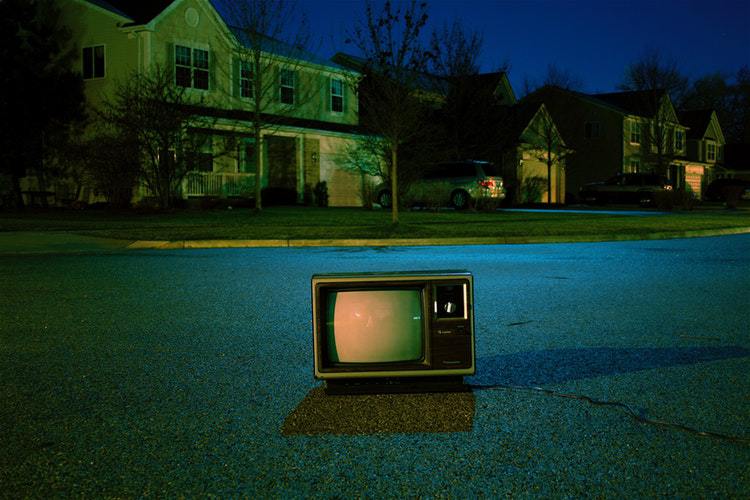Television Time
The television set that became an important device in every family’s house has a long history. It is no doubt that the television (with the Internet as an exception) is the most influential invention of the twentieth century.
We know for a fact that each family would have at least one television at home. After it became commercially available in the thirties, the television went through a lot of developments – from the size, energy saving capability to image and audio quality.
The television set that we used a couple of years ago is different from the ones that we have now.
The evolution of the television dates back in 1930. We were introduced to the huge mono-color or the black and white television set. If you still own one of these black and white TV sets, you are lucky! This is a wonderful piece of history.
Anyway, the continued interest to make viewing better was the main reason why inventors pushed for the colored television sets. It was during the fifties when people enjoyed the tube that can project colored images and videos.
Decade after decade, the improvements and innovation with the design and quality of the television has been amazing.
The Television Signal
In the past, the strongest signal of our television was based on two factors – the network’s signal, being the sender and the location of your house as the receiver. For quite some time, the television signal uses external antennas. These were the devices we usually place on the roof or somewhere near the house that can receive the best reception. This external device is connected to our television set using a cable.
There are many downsides of the external device, it does not provide a steady signal, and sometimes it can only project certain TV Channels.
These are the main reasons why network experts wanted to provide nothing but the best to all consumers.
Today, networks or TV Companies have developed better ways on how to transmit television signals. We now have Cable, HD TV, and Internet Television and even moved to Mobile Television.
The Digital TV Concept
Digital television or also known as the DTV is the transmission of television signals and audio or sound signals using the concept of digital encoding.
In the earlier days, TV signals were transmitted using analog signals. The Digital TV is an innovative advance that signifies the first substantial evolution in television technology after the introduction of the color television during the fifties.
A noteworthy feature of Digital TV is that it can transmit multiple channels in the same bandwidth, has better image reception.
The rise of Cable TV
Cable television is a structure where the transmission of television programs to paying subscribers is done through radio frequency signals. These signals are then transmitted through cables or more popular known as coaxial cables.
This was the reason why we now call it on cable television. With further innovations, the cable TV saw better days when fiber optics came in the picture.
Fiber optics unlike the regular cables, use light pulses through fiber-optic cables to transmit the program signal.
The cable and fiber optics are different from broadcast television. Like what we discussed earlier, television signal before was transmitted to our TV sets through radio waves and are then received by those huge external antennas.
For some households that have more than one television set, the best option is going to Cable TV. Cable companies do not mind subscribers having several TVs. There will be a minimal add-on cost should you wish to have a sub-connection.
Aside from that, Cable Companies also offer internet access either high-speed or Broadband access. This is a usual package offer from most cable companies. You can even subscribe to their live streaming and pay-per-view options.
Another good feature and advantage of subscribing with cable service are that the subscription you will be signing up for includes local and international channels. You can even choose the channels that you can subscribe in, the lesser channels, the cheaper the cost. Of course, more channels mean bigger subscription cost.
If you are also considered for reception problems, then going for cable service will be your best option. Cable service provides a consistent transmission service. They also have their third-party technicians who can easily provide technical assistance.
Internet TV
One of the key developments in the history of television is the rise in Internet TV. What is Internet TV and why is it very famous?
To understand it in its simplest form, Internet TV is a form of delivering or transmitting video and audio over an Internet connection. Internet TV is also known as the IPTV or Internet Protocol Television. You can easily watch Internet TV using your laptop, mobile device, tablets and even in your standard TV sets.
Internet TV is the newest form of TV Transmission. Internet TV usually delivers the same video content through live streaming or on-demand.
One of the biggest advantages of Internet TV is its accessibility. You can watch live streaming videos on on-demand videos 24/7. You can also get movie packages from entertainment companies like Netflix. Another positive aspect of Internet TV is that you can watch TV Shows from the past that are no longer being shown on standard TV.
The HD TV Experience
High-definition television or HDTV is another television system that provides an image quality or higher resolution than that of standard-definition. The HDTV is the present usual video format used in most broadcasts. These include terrestrial broadcast television, cable television, satellite television, DVDs, and streaming video.
There are many benefits and advantages of High definition TV or HDTV. The first on our list is a better quality image, meaning clearer pictures. Other benefits include superior sound quality, better channel scanning and a wider viewing screen.
If you are looking to set-up your ultimate dream of a home theater system then buying an HD TV is the best option. There are a lot of HD TVs in the market that you can choose from. The best thing to do is to buy based on your need because HD TVs come with a bigger cost.

